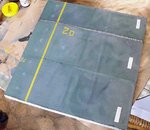- Thread starter
- #361
Airframes
Benevolens Magister
Nope! They aren't misaligned. When I saw the pic, I thought 'How the heck have I managed that, and not noticed?'
So I checked, and I think it must be the lighting! Bl**dy good job, as I spent ages sanding the joints on all four bombs, and coating them, (as one of the bombs made will be on full view on a trolley) before roughing-up the casings to represent where they'd been roled around.
Thanks though, Mag and VB!
So I checked, and I think it must be the lighting! Bl**dy good job, as I spent ages sanding the joints on all four bombs, and coating them, (as one of the bombs made will be on full view on a trolley) before roughing-up the casings to represent where they'd been roled around.
Thanks though, Mag and VB!

